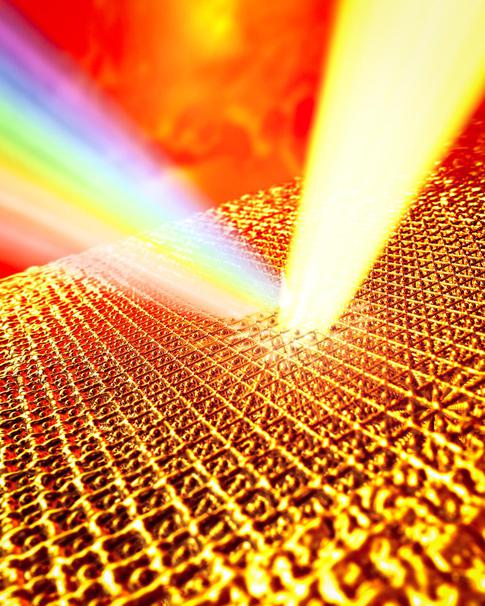XFEL: Superheated gold overturns long-held theory of superheating
Superheated gold overturns long-held theory of superheating

Researchers at SLAC used a laser to superheat a sample of gold. Then, they sent a pulse of ultrabright X-rays from the Linac Coherent Light Source through the sample to measure the speed, and thus the temperature, of the atoms vibrating in the sample. Graphic: Greg Stewart/SLAC
In their research article, “Superheating gold beyond the predicted entropy catastrophe threshold,” physicists revealed they were able to heat gold to over 19,000 Kelvin, over 14 times its melting point, without it losing its solid, crystalline structure. This result overturns the long-held theoretical limit known as the entropy catastrophe. The entropy catastrophe theory states that solids cannot remain stable above approximately three times their melting temperature without spontaneously melting. The melting point of gold, 1,337 Kelvin, was far more than tripled in this experiment utilizing a powerful laser at Stanford University’s SLAC National Accelerator Laboratory.
Researchers at the University of Nevada, Reno, SLAC National Accelerator Laboratory, the University of Oxford, Queen’s University Belfast, European XFEL and the University of Warwick designed an experiment to heat a thin gold foil using a laser fired for 50 quadrillionths of a second (one millionth of a billionth). The speed with which the gold was heated seems to be the reason the gold remained solid. The findings suggest that the limit of superheating solids may be far higher – or nonexistent – if heating occurs quickly enough. The new methods used in this study open the field of high energy density physics to more exploration, including in areas of planetary physics and fusion energy research.
The research will open new doors in studies of superheated materials.
